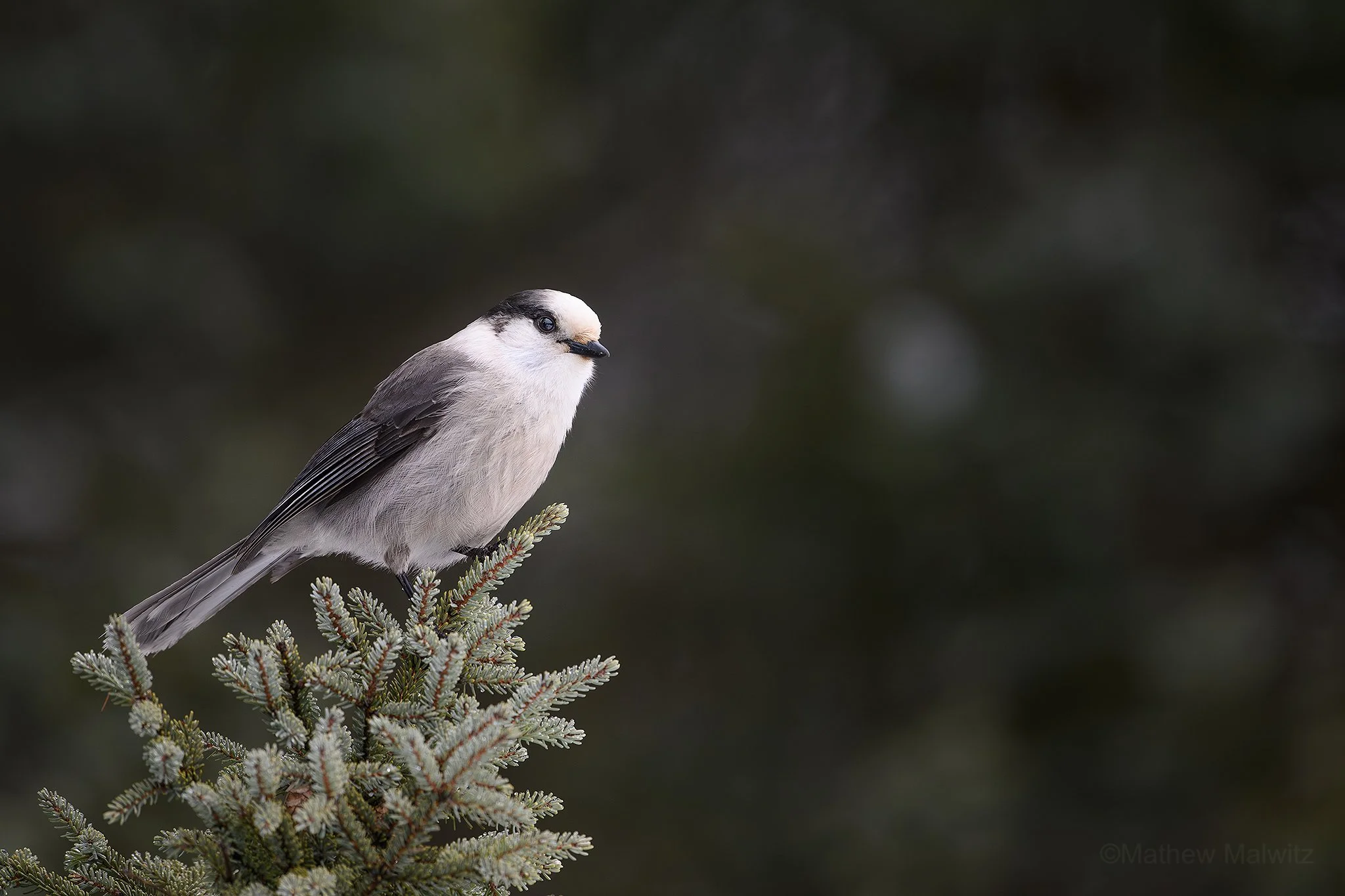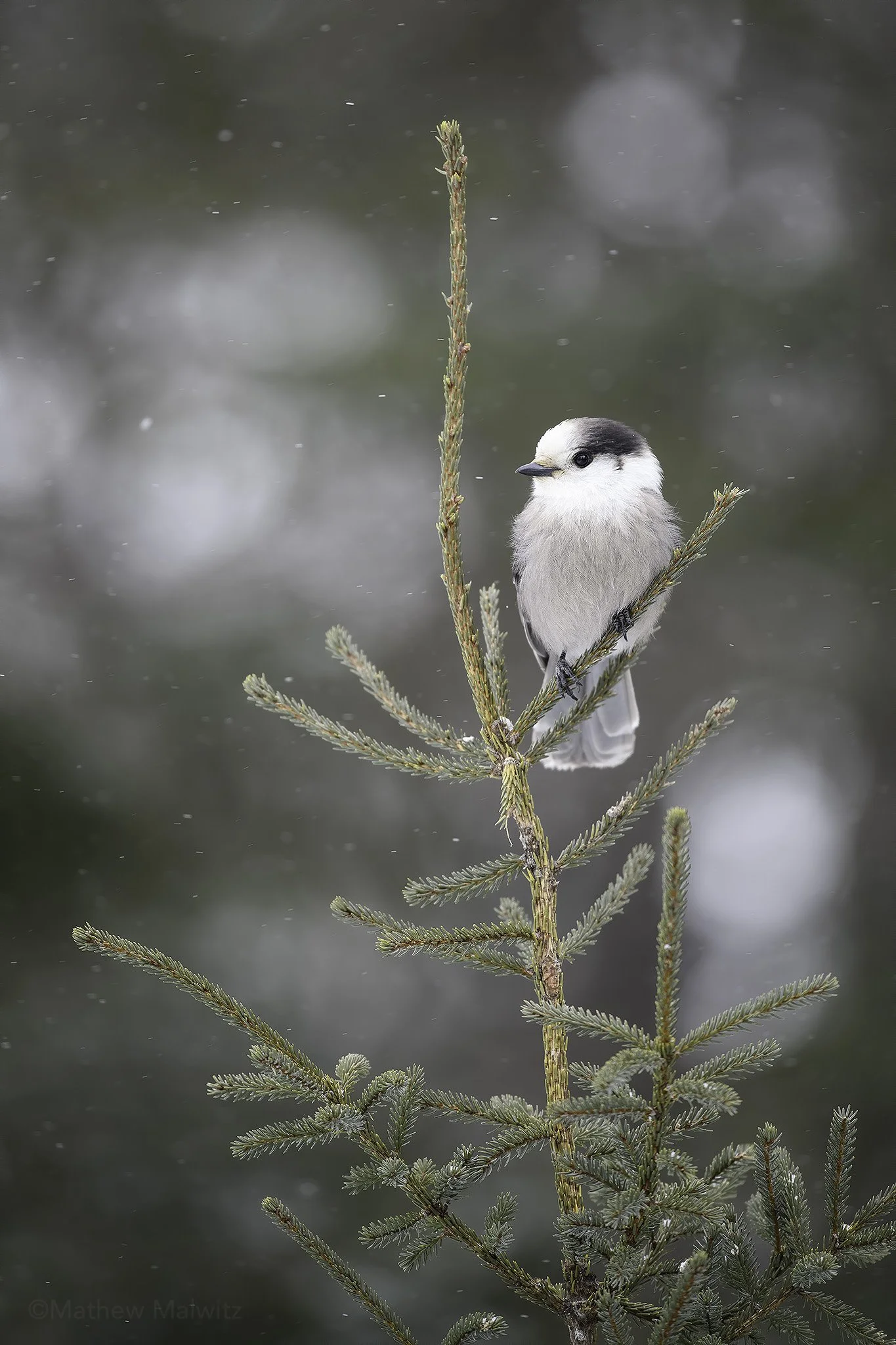Canada Jays of Northern New York
New York is a state steeped in history and natural beauty that often goes overlooked. While everyone knows New York City, the large state is a vast landscape featuring sandy beaches, coastal marshland, open grassland and even pockets boreal forest. These habitats and resulting inhabitants are diverse and in many cases, ecologically exclusive to those regions. In social media posts and blog posts written for past employers, I’ve spoken of the Grasshopper Sparrow. This is a grassland specialist species which can be found in open fields and prairies throughout central New York. Today, I want to talk about another specialist species that calls the frigid bogs of the Adirondack Park home. I am of course, referring to the Canadas Jay.
Canada Jays, formerly known as Gray Jays, are corvids. This puts them in the same family as crows, ravens, and other jays like the common Blue Jay. Many of which are equally hardy birds that can survive and even thrive in some of the harshest winter conditions found in North America. The Canada Jay has a much fluffier look about ti than other jay species and this is an adaptation to its boreal home. Unlike other jays which may migrate short distances when the cold weather arrives, Canada Jays brace for the weather and rely and food caches they carefully leave throughout their territory. That’s right, these birds stash food behind tree bark and in other nooks and crannies throughout the forests they call home in preparation for snowy weather. As the temperatures drop, these caches do not spoil as the cold serves as a natural refrigerator. This doesn’t mean the jays wont visit feeders and other food sources, quite the contrary. Througout winter, Canada Jays continue to forage as caches can only be used to store so much food. Not to mention the risk of other animals discovering these caches.
For this reason, these Jays have adapted to rely on humans to an extent for feeding. Bird feeders are popular choices but these birds are no stranger to scavenging. This behavior has earned them the nickname “camp robber”. Carrion, berries, nuts, seeds, and even others birds eggs are all on the menu for a curious Canada Jay. It’s this bold and curious behavior that drew me to photograph these birds. I’ve now spent a number of years photographing these birds in the Northern Adirondacks and each time brings it’s unique flavor to the mix. Winter is always ideal as the birds frequently visit feeders to stock up, though a trip at any time of year can result in ample photo opportunities. I’ve had nearly half a dozen birds frequenting a feeder in early October. One of these birds is seen in the first image of this gallery.
I hope you enjoyed this brief read. For more nature photography content, checkout my other blog posts and stay tuned for more. Thank you.













